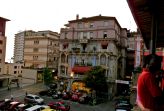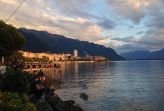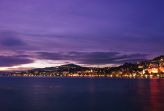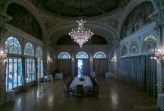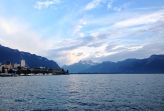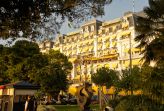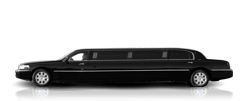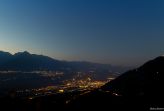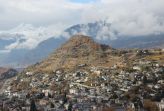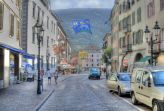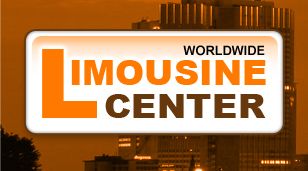
|
|
Private transfer service in Montreux from Limousine Center Switzerland
GET THE BEST OFFER EASILY
FREE!Multiple offers, directly from our local Partners!
- Limousine Center
- ›
- Montreux transfer
- ›
- Private transfer Montreux to Sion
Transfer from Montreux to Sion
Private transfer service from Montreux.
People loves when they can find everything in one place. And they also love when they can sit back and enjoy the uninterrupted personalized services. Do you love this too? Of cours you do! This is why Limousine Center will help for you to find a reliable chauffeur service in Montreux with an exclusive Limousine.
Get the best Limousine in Montreux with our help! You just have to fill out the form on the left side and the companies will send you their offers!

Our reliable Partners are always check your flights arrival time. If your plane is arrive earlier or later you do not have to afraid. Your Limousine and it's chauffeur will be there and waiting for You!
If you are on the way just download the Android app of Limousine Center and fill out the form.
First time visit in Montreux? Need an exclusive Limousine? Try Limousine Center now!
The database of Limousine Center is in you pocket! Download the Limousine Center's app from the Play Store for any Android smartphone. Easy and free to use!
Our customers said
 |
One Customer from Bruxelles: We had a good evening, very friendly people in this service, not so expensive and a nice quality... Thx a lot. |
 |
Elena Maria Sadek from Cairo, Egipt: Great experience!!! I'll definitely use it again!!! |
| Montreux |
| Montreux is a municipality in the district of Riviera-Pays-d'Enhaut in the canton of Vaud in Switzerland. It is located on Lake Geneva at the foot of the Alps and has a population, as of December 2010, of 24,579 and nearly 90,000 in the agglomeration. The earliest settlement was a Late Bronze Age village at Baugy. Montreux lies on the north east shore of Lake Geneva at the fork in the Roman road from Italy over the Simplon Pass, where the roads to the Roman capital of Aventicum and the road into Gaul through Besançon separated. This made it an important settlement in the Roman era. A Roman villa from the 2nd-4th centuries and a 6th-7th century cemetery have been discovered. In the 12th century, viticulture was introduced to the region, and the sunny slopes of the lake from Lavaux to Montreux became an important wine-growing region. Montreux is first mentioned in 1215 as Mustruel. In 1295, the Bishop of Sion sold the parish of Montreux to Girard of Oron. In 1317, it was split between the Lords of Oron (Le Châtelard) and the Counts of Savoy (Les Planches). A Brotherhood of the Holy Spirit administered estates and a hospital in Montreux starting in about 1309. |
 |  |  |  |  |  |  |  | ||||||||
| Weather | WikiPedia | WikiTravel | TripAdvisor | Web | Hotels | Map | Pictures |
This article uses briefed material from the Wikipedia article Montreux, which is released under the Creative Commons Attribution-Share-Alike License 3.0, just as this article about the city.
| Sion |
| Sion is the capital of the Swiss canton of Valais. As of December 2010 it had a population of 30,363. Landmarks include the Basilique de Valère and Château de Tourbillon. Sion has an airfield for civilian and military use and which serves as a base for countless life-saving air rescue missions. FC Sion is the local football team. They currently compete in the Swiss Super League. Sion is one of the most important pre-historic sites in Europe. The alluvial fan of Sionne, the rocky slopes above the river and, to a lesser extent, Valeria and Tourbillon hills have been settled nearly continuously since antiquity. The oldest trace of human settlement comes from 6200 BC during the late Mesolithic. Around 5800 BC early Neolithic farmers from the Mediterranean settled in Sion. The settlements remained small until about 4500 BC, during the middle Neolithic, when the number of settlements increased sharply. To support the population increase, farming and grazing spread throughout the valley. They also began burying their dead in Chablandes-type stone burial cists with engraved anthropomorphic stelae. The individual graves changed at the beginning of the third Millennium BC in large, dry stone wall communal tombs (such as the Dolmen of Le Petit-Chasseur). During the Beaker culture period in the second half of the third Millennium, dolmens were built once again, but they were smaller and had no podium. Stelae continued to be carved, though these were rich with geometric patterns and sometimes built out of old dolmen. At the beginning of the Early Bronze Age (around 2300 BC) the last stelae were erected. |
 |  |  |  |  |  |  |  | ||||||||
| Sion Weather | Sion WikiPedia | Sion TripAdvisor | Sion Web | Sion Airport | Sion Hotels | Sion Map | Sion Pictures |
This article uses briefed material from the Wikipedia article Sion, Switzerland, which is released under the Creative Commons Attribution-Share-Alike License 3.0, just as this article about the city.




